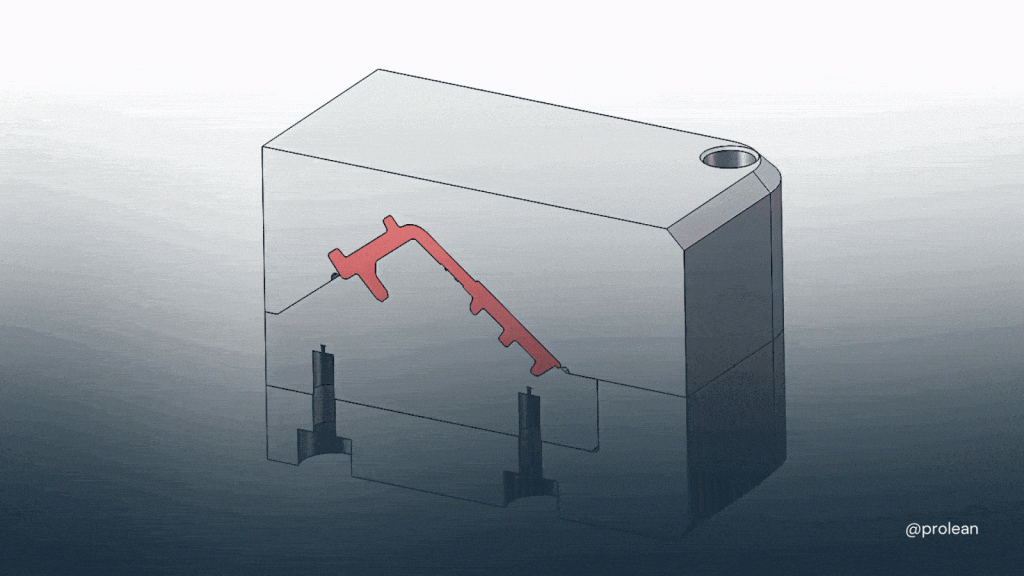
Undercuts in injection molding are defined as shapes that create challenges when it is time to release a part from the mold without distorting it. They usually tend to raise the level of difficulty and therefore the cost of production and as such should be avoided as much as possible. However, undercut injection molding is a significant technique for manufacturing components with complex geometry, and controlling these features is critical for efficiency. In this article, Pro Lean Tech has attempted to briefly discuss the significance of the management of undercuts in injection molding and how 6 significant approaches can be employed to incorporate undercuts in manufacturing processes.
What does Undercut in Injection Molding mean?
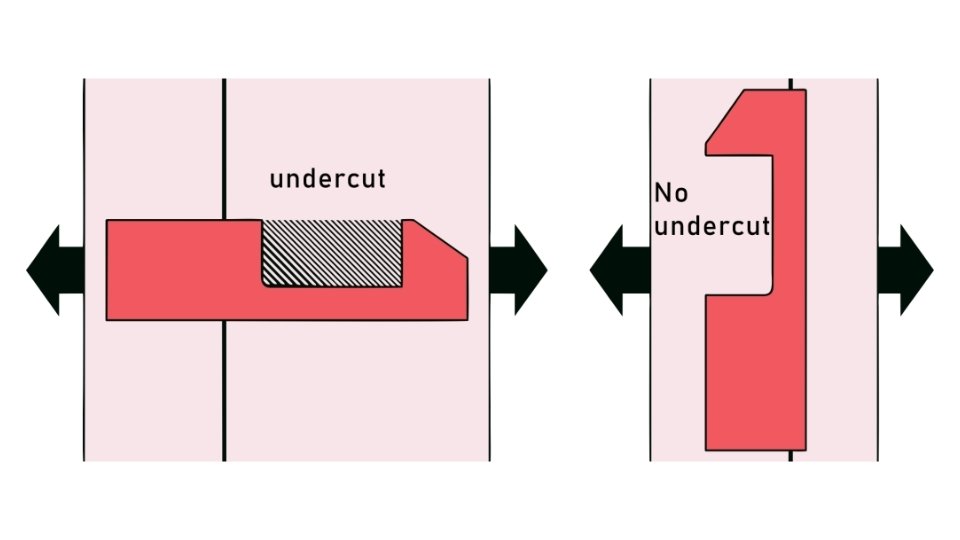
Undercut injection molding
In injection molding, a mold undercut is defined as the geometry of the molded part that complicates the part removal from the mold. This occurs when the shape of the part has undercuts or bosses that hinder the ejection to be smooth. Undercuts are generally incorporated in designs that need snap fittings, threaded portions, or barb fittings. Solving these issues usually requires the application of sophisticated techniques of molding to provide the possibility of getting the part out of the mold.
Try Prolean Now!
Situations That Make Undercut Injection Molding Necessary
Undercut injection molding is used in certain circumstances where conventional molding approaches cannot be used because of part geometry or functionality. The following are some of the areas where undercut features are crucial to obtaining accurate functional shapes.
- Custom Inserts
Where there is a need to have parts that fit into other parts in a very precise manner, undercut injection molding allows for the creation of specific inserts that can easily fit into the larger parts. This technique is often applied in industries like the medical devices industry where the fit and position of the part are critical. Also, the custom inserts created through undercut molding offer a perfect solution to mechanical fasteners such as screws/rivets; thus, improving a clean assembly process.
- Side Holes
The introduction of side holes in parts presents difficulties to the conventional molding methods. Nevertheless, undercut injection molding makes it possible to accurately curate such features, which are the most used in terms of mounting extra parts, and connecting the molded part with other machinery. Other benefits of side holes include providing ventilation, dissipation of heat, and incorporation of certain components in a product part.
- Vertical Threads
Undercut injection molding is also very useful in mechanical assemblies and vertical threading is one of the most common uses of this technique. These threads which are mostly used in screws, bolts, or any part that is required for rotational connection depend on the undercut molding for precision. The method helps to keep the threaded components intact for the required level of security and stability in assembling them.
- Barb Fittings
Barb fittings which are used in the control of fluids and piping rely on undercut features for connection purposes. The male section of the fitting is cut away on a bevel to provide a lip that engages with the female section and will not allow leakage or disconnection on pressure. It is noteworthy that this precise undercut design is of paramount importance to system integrity.
- Interlocking Features
When there are interlocking designs that need to be created, especially in structures like the tongue and groove type, then the use of undercut injection molding is necessary. This process enables one side of the tongue to be cut so that it fits correctly on the corresponding groove. These features must be undercut to allow for correct alignment and mechanical interlock within the assembled product.
Six Methods for Managing Undercuts in Injection Molding
Undercuts in injection molding processes are an issue of concern because they come along with additional complications as well as expenses. Below are six useful approaches to handling them:
- Adjust Parting Lines
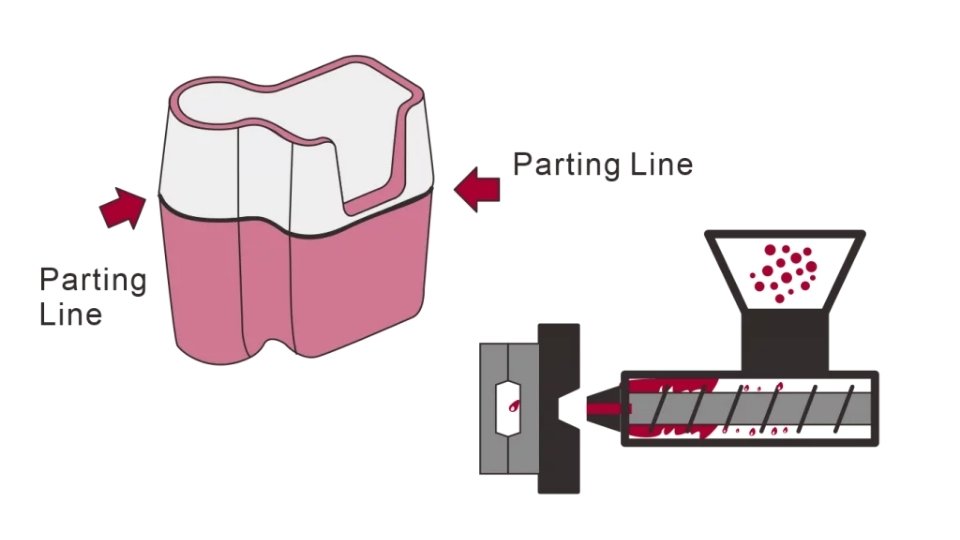
Parting lines in injection molding
Adjusting parting lines has implications when it comes to undercuts, because, to counter them, the position of the mold’s parting line can be shifted. It is also possible to minimize the molding complexity by positioning the parting line in a manner that divides other features including the stand-offs. This method allows one to change the draft angles and the orientation of the mould although this may not always be possible due to the material flow and geometry of the part.
- Utilize Side-Actions
Side actions are employed in developing features like through-holes or tubular components of a product. They are positioned perpendicular to the direction of the mold opening and freeze during the injection process to make undercuts. Side-actions are used for feeding materials such as nylon and are quite effective but they have their drawbacks in terms of size and complexity and are not very suitable for flexible materials.
- Employ Bumpoffs
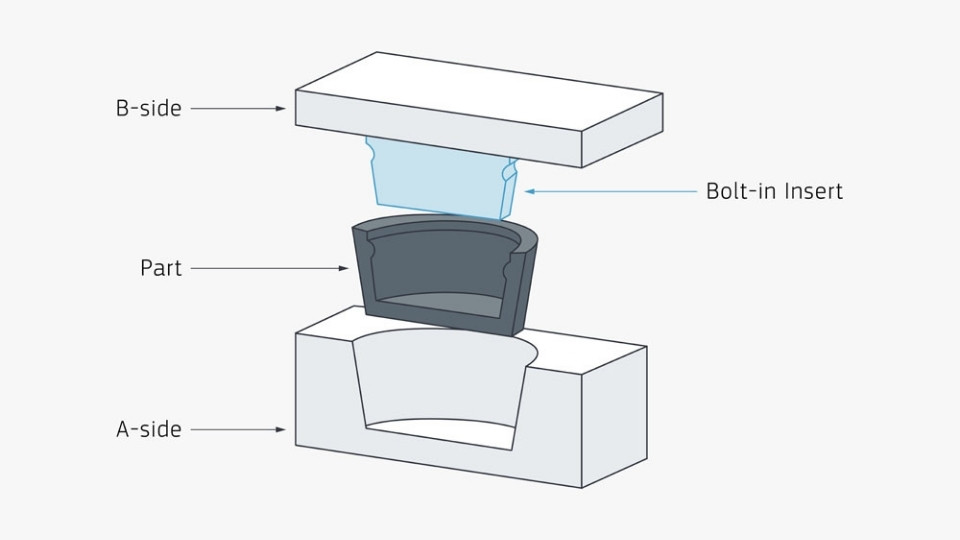
Undercuts by employing bumpoffs
Bumpoffs are used on the part which has snap-fit characteristics such as the cap or cover part, where the part is inserted into a mating feature. This technique relies on the plastic material’s ability to deform and regain its original shape in undercuts during the ejection process. This is because; there are materials that are best suited for the job such as; low-density polyethylene (LDPE) and thermoplastic elastomers (TPE). Ensure that the undercut area has a smooth and round edge to avoid tearing off the material.
- Implement Hand-Loaded Inserts
Hand-loaded inserts are utilized to block some areas of the mold where there are undercuts especially those with steep slopes. These inserts are hand-inserted and extracted and hence can be used in low-volume production or prototype parts. This is less automated and a cost-effective method especially when the design is complicated and other methods cannot be used.
- Apply Telescoping Shutoffs
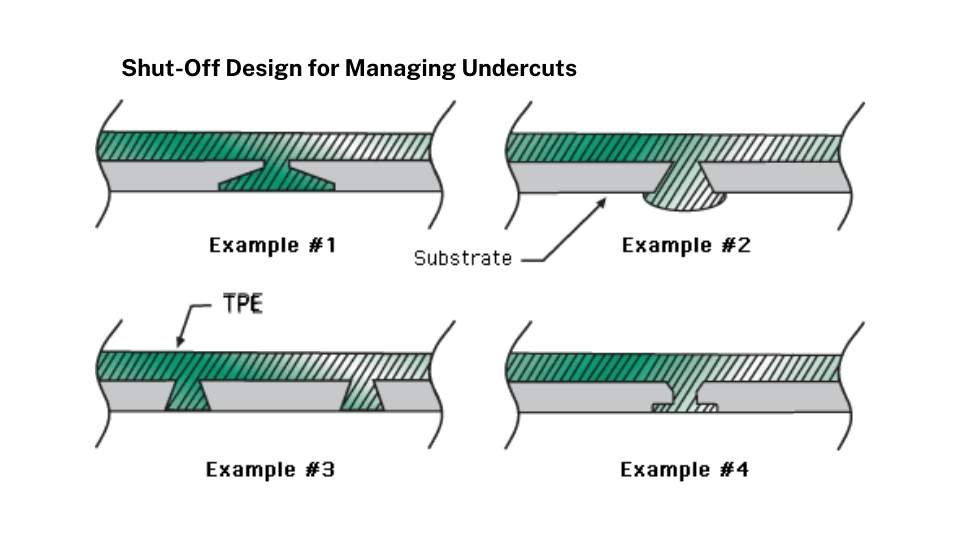
Shut-offs for managing undercuts
There are two kinds of shutoffs: telescoping and snap-on, for clip-style mechanisms. The mold has a ‘telescope’ that swings out to make the undercut and makes the design easier because there are no side actions or inserts. Ensure that the mold has the right draft for instance not less than 3 degrees so that there won’t be issues like flash or tools again.
- Consider Design and Secondary Operations
Part design should be properly done to minimize on-control undercuts. Add draft angles as well as constant wall thickness and consider other machining operations such as drilling or milling for other characteristics. Some of these operations can be less expensive than complex mold designs, especially for prototypes and low-volume productions.
Related To: Injection Molding Quality Control
Undercuts in Injection Molding: The Challenges
Undercuts in injection molding have several design implications that include design difficulties, material selection, and aesthetic considerations. Here’s an overview of the main issues:
- Draft Angle Issues
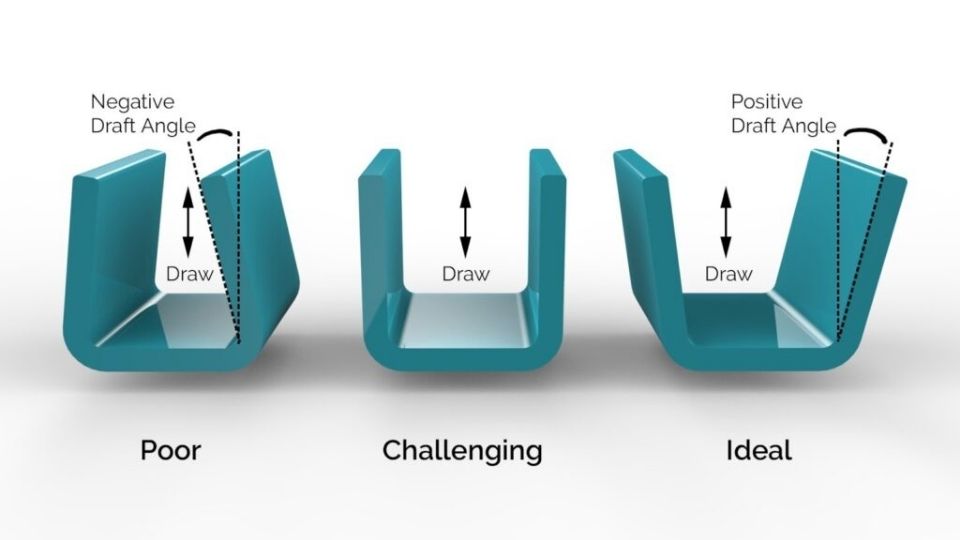
Draft angles in injection molding
Undercuts significantly affect the design of molding especially as it relates to draft angles. Correct draft angles are significant so that the molded part can be ejected easily. Complex undercuts involve the need to have tight control over both the draft and the cavity angle. Lack of draft may pose challenges in ejection hence, design modifications must be made to facilitate easy mold release without major problems.
- Material Extraction Difficulties
Some of the materials are difficult to handle in situations where undercut tips are involved. For example, plastics containing glass or other reinforcing materials may be very difficult to mold. It is very important to note that the stronger the material is the more draft angles are needed to assist in the ejection process. It is therefore critical to note that flexibility and elasticity of the material are key factors that define the most appropriate strategy for undercut molding.
- Aesthetic Constraints
Certain issues must be taken into consideration when it comes to the use of undercuts tips because of their aesthetic implications. Sometimes it becomes difficult to achieve this with undercuts especially when the design requires no parting lines or other surface flaws. This may call for further modification of the design or the use of a higher level of tooling to achieve the desired look and feel of the product as well as cater to the challenges associated with undercut features.
Undercut injection molding – it’s Common Applications.
Due to the possibility of manufacturing components with intricate details, undercut injection molding is applied in a broad range of industries. Here are some key sectors where undercut molding is particularly valuable for manufacturing injection molded parts:
1. Medical Devices
Undercut injection molding is crucial in the medical industry because most designs of the critical elements are complex. Medical devices include life-supporting equipment, oxygen delivery systems, and many other products that may have intricate shapes and sizes that are important for their working and reliability. For such critical applications, manufacturers can achieve the necessary and predictable performance with undercut molding techniques while keeping the manufacturability of the parts intact.
2. Consumer Electronics
In consumer electronics, plastic housing is preferred because of its durability, electrical insulation, and scale economy These housings often need undercuts to accommodate apertures like ports, push buttons, and switches among others. In many consumer electronics, it is critical to realize these features in a single molding operation since subsequent operations are detrimental to appearance and performance. Designing for undercuts enables designers to come up with smooth and functional designs for gadgets such as Smartphones and other electronic equipment.
3. Design Considerations
Undercut molding is a practical technique that has to be used effectively and thus its design must be well-considered. Some of these include making sure that undercut features are oriented in a way that will make it possible to remove them from the mold. Side actions and other components must be designed with enough space so that they do not interfere with each other. Moreover, the hand-loaded or pinched sections must be easily negotiable by the operators to enhance production, while at the same time preserving the part’s structural integrity.
Related To: low volume injection molding
Try Prolean Now!
Prolean Tech, Your Partner to Attain Undercut Success
Undercut plastic injection molding is quite challenging, and it needs a professional approach and proper equipment, as Prolean Tech offers. Our modern equipment and experienced staff are capable of working with the specifics of undercut designs and providing clients with a high-quality product at a reasonable cost.
In addition to providing injection molding services, Prolean Tech provides full-scale Design for Manufacturability (DFM) assessment. This analysis enables you to fine-tune your part design to strip out unnecessary design details and find the best approach to rapid manufacturing. Collaborate with Prolean Tech and convert your undercut molding problems into achievements. Get Your injection molding quotes from our Engineers Now!
FAQ’s
Q1: What is meant by undercuts in injection molding?
Undercuts are those areas or parts of the molded part that prevent the molded part from being removed easily from the mold. These can be internal which is within the surface of the part or external on the surface of the part.
Q2: What is the undercut molding process?
The undercut molding process employs other means of movement such as slides or core pulls to avoid undercuts through which the part can be ejected from the mold.
Q3: What is a “parting line” in injection molding?
Parting Lines are joints where the two halves of the mold open. These are important for controlling and liberating the molded part without causing any harm to it.
Q4: What are the types of undercut in injection molding?
Undercuts in injection molding are of two types; internal and external. In internal undercuts, cutting is done inside the part, and alongside, in external undercuts, the cutting operation is carried out on the outer part surface. Additionally, in both cases, there is a requirement to use special mechanisms such as lifters or sliding cores to eject the part.
Q5: Should I Divide My Part into Multiple Components for Complex Undercuts?
Deciding whether to split apart into many components because of complicated undercuts is a critical decision. Sometimes the design may be very complex and this may require breaking down into several sub-designs that are easier to handle. While this approach can, however, lead to increased employment costs and extended time in manufacturing. Moreover, having a single well-designed mold may produce a higher level of accuracy and productivity. So, it’s important to consider all the options and to find out if it is really necessary to use a multi-component mold, or if the more developed mold would be enough to solve the problem with undercuts.

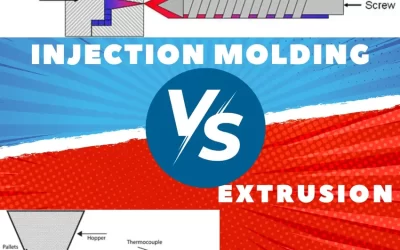
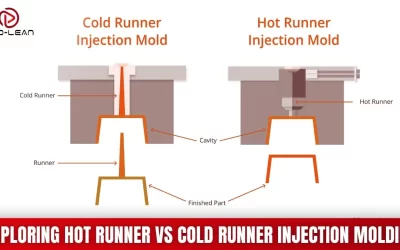
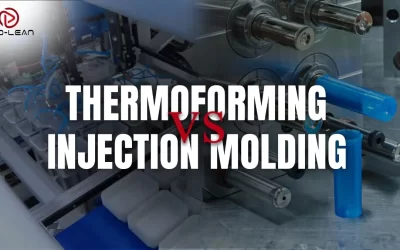
0 Comments